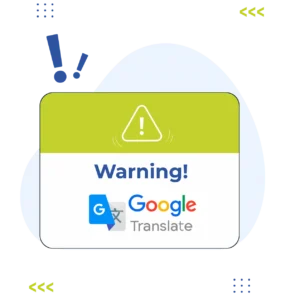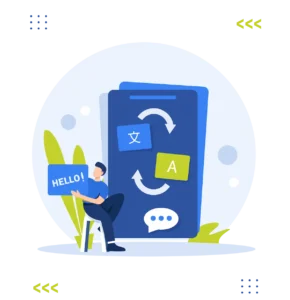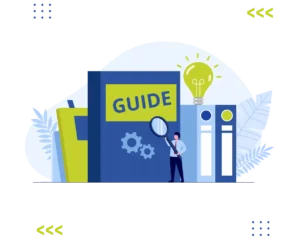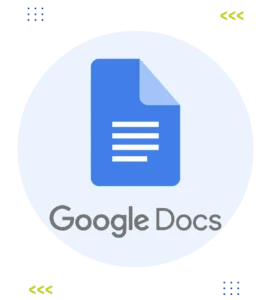You can think of translation as a one-way process that simply involves rendering a text from one language into another. However, there is more to this process that makes it go both ways!
How so?
In this article, we’ll explore the interesting process of back translation or ‘reverse translation’ that involves hiring a translator who translates the target text back into the source language.
How is back translation beneficial, and who might need it? This and more we’ll explore below.
What is back translation?
Back translation, also called reverse translation, is the process of translating a translated text back to the source language. It is often used as a quality assurance tool because it scans for any discrepancies or deviations in the translation and corrects them.
Therefore, back translation is a comprehensive quality assurance process because it makes a 360-degree comparison with the original translation.
The process of back translation involves 4 steps
- The translator first translates the source text into the target language.
- Another translator translates the target text back into the source language.
- There is a process of reconciliation. The differences manifested between the initial translation, and the back translation are to be reconciled.
- Finally, there is a process of evaluation of the outcome of this reconciliation to ensure everything is in place.
What is reconciliation
After the back translation is finished, a reconciliation happens when the original translator defends his or her translation or offers alternatives. The whole point of back translation is to manifest differences between the two texts so that these differences can be corrected or ‘reconciled’ in the target translation to achieve a more accurate outcome.
Back or reverse translation VS double translation?
Back translation is not to be confused with double translation, although many online sources define them as the same thing. Double translation is a method where a translator creates multiple versions of a piece of content, allowing for alternatives.
Why would you use the back translation method?
- Back translation is important for spotting mistakes in highly specialized technical texts like medical and legal ones.
- A Great way to solve inconsistencies or ambiguities in translation.
- Ensures a well-localized translation that translates cultural nuances perfectly.
- To adhere to compliance regulations.
- To preserve legal intent when it comes to legal texts.
- Building globally accessible content.
- Building trust and transparency of a business in an international market.
- It makes content sound customized and catered for audiences.
The best types of back-translated content
Not all types of translation need to be back-translated. Back translation could do more harm than benefit in some cases.
There are two main types of content that can benefit from back translation: Highly regulated content, and creative content:
Highly regulated content:
Legal content: contracts, and insurance documents.
Technical content: back translation of user manuals, safety warnings, operating instruction manuals, and product descriptions.
Financial content: reports, bank statements, and stock market information, all must be translated to comply with financial regulations.
Medical content: protocols, drug information, pharmaceutical research, patient records.
Creative content:
This is special to the marketing sector, and could be anything from the below:
marketing slogans, advertisements, Ad copies, product labeling…etc.
When to use back translation services…and when not to
- Hiring an additional translator to do reverse translation can double the cost of the project, yet reverse translation is needed when your business can’t afford inaccurate translations by any means.
- When the content belongs to a highly technical and regulated field, as the ones established above. There, it becomes crucial to translate your content in the most accurate way possible.
- When your content is very creative and highly important for the business.
When you don’t have to use back translation?
- You don’t have to reverse translate the whole document, you can be smart about which parts of paragraphs need to be double-checked.
- When other methods of quality assurance and proofreading will do the job.
- When the content is literary or highly creative, such as poetry. Back translation could harm the essence of the source text instead of staying faithful to it.
- When you can’t increase the project cost further by hiring an additional translator to do a back translation.
Who uses back translation?
Businesses that are operating in international markets and want to reach a wide audience.
You can think of Macdonald’s slogan ‘I’m lovin it’ and how it’s translated across cultures.
In German it’s Ich liebe es, which means “I love it”.
In Turkish, it’s “İşte Bunu Seviyorum”, which means “That’s what I like”.
In Arabic, it translates to “انا أحبه”, which means “I love it”.
However, back translation shows an interesting mistake when the slogan was translated into Chinese (wo jiu xihuan) which when back-translated means (I like it no matter what you say), which intrinsically changed the interpretation of the slogan.
This mistake has been spotted by Mark Cohen who published it in an article entitled “I’m Lovin’ it!” – A “Wrong Way” for McDonalds?
In addition to this, there are some regulatory restrictions needed in highly technical fields like the medical, pharmaceutical, financial, and legal ones, that require translated content to comply with those regulatory standards in a target region.
Creative back translation examples
Creative examples of back or reverse translation can be found all over the marketing field. When it comes to advertising, the translation of copies is often highly creative and strikes people as funny in some instances.
BMW’s Slogan
BMW’s slogan “Freude am Fahren” was translated to English as “sheer driving pleasure“. The back translation revealed to us that the English translation meant ‘Fahrvergnugen’ in German, or “driving enjoyment”.
KFC’s Slogan
A famous example of funny reverse translation is of KFC slogan
“Finger Lickin’ Good” was translated falsely into Chinese as “Eat Your Fingers Off“, which is an embarrassing error that could have been avoided with the use of a back translation.
Speak of the Devil
Recently, the Language Nerds community has published an interesting article about how the idiom “speaking of the devil” is said in different cultures.
In French: Speak of the wolf and he’s out of the woods/ Speak of the wolf, and there is its tail.
In Czech: Speak of the wolf.
In Arabic: When you mention the cat, it comes out jumping.
In Spanish: Speak of the King of Rome.
In Japanese: Speak of the devil and its shadow will appear.
In Italian: Speak of the devil and its shadow will appear.
Such a resource could come in handy when translating highly idiomatic content for businesses. When localizing content for a specific audience, it is extremely important to come prepared with such language differences across different regions.
Notice how the translation of this idiom is quite similar in Japanese, English, and Italian because they mention the ‘devil’.
While Czech and French share the analogy of the ‘wolf’.
Back translation best practices and recommendations
- Use a different translator for back translation to avoid conflict of interest.
- Don’t show them the original content to eliminate bias.
- Provide clear guidelines to the translator, along with proper context, that could include referential materials or glossaries.
- Ask your back translator to be as precise as possible, but not to violate the original language’s grammatical rules for the sake of a 100% word-for-word rendering.
- Compare the back translation to the original text yourself or invite a third-party linguist to do it.
- Involve native speakers who understand cultural nuances perfectly.
- Use Machine Translation carefully. Machine translation is still capable of glaring errors. Attempting reverse translation is best handled by a human translator.
- Make a checklist! At the end of the project, ask questions like: does the back translation accurately reflect the source text’s meaning and tone? are there any remaining inconsistencies to amend? What about terminology consistency? Is the Grammar, and punctuation, correct? Are cultural nuances taken care of?
How fast trans handles back translation
Now, Fast Trans, one of the leading translation companies in MENA, is here to assist you with high-quality and rock-bottom prices for back translation and transcreation services.
Our team of certified translators get the job done, whether you need any of your documents to be translated into the target language, or you want to hire a third party to handle your back translations.
Either way, Fast Trans has got you covered.











